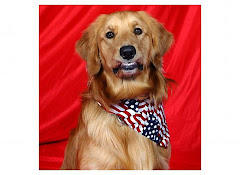Chewing: The Whys and Hows of Stopping a Gnawing Problem
Sooner or later every dog lover returns home to find some
unexpected damage inflicted by his or her dog; or, more specifically, that
dog's teeth. Although dogs make great use of their vision and sense of smell to
explore the world, one of their favorite ways to take in new information is to
put their mouths to work.
Why dogs chew
Puppies, like infants and toddlers, explore their world by putting objects in their mouths. And, like babies, they teethe for about 6 months, which usually creates some discomfort. Chewing not only facilitates teething, but also makes sore gums feel better.Adult dogs may engage in destructive chewing for any number of reasons. In order to deal with the behavior, you must first determine why your dog is chewing—and remember, he's not doing it to spite you. Possible reasons for destructive chewing include:
He's bored.
He suffers from separation anxiety.
His behavior is fear-related.
He wants attention.
Manage the situation
Take responsibility for your own belongings. If you don't want it in your dog's mouth, don't make it available. Keep clothing, shoes, books, trash, eyeglasses, and remote control devices out of your dog's reach.Give your dog toys that are clearly distinguishable from household goods. Don't confuse him by offering shoes and socks as toys and then expecting him to distinguish between his shoe and yours.
Supervise your dog until he learns the house rules. Keep him with you on his leash in the house so he can't make a mistake out of your sight. Confine him when you're unable to keep an eye on him. Choose a "safe place" that's dog-proof, and provide fresh water and "safe" toys. If your dog is crate trained, you may also place him in his crate for short periods of time.
Give your dog plenty of people-time. Your dog won't know how to behave if you don't teach him alternatives to inappropriate behavior, and he can't learn these when he's in the yard by himself.
Give your dog plenty of physical and mental exercise. If your dog is bored, he'll find something to do to amuse himself and you probably won't like the choices he makes. On the other hand, a tired dog is a good dog, so make sure he gets lots of physical and mental activity. The amount of exercise should be based on his age, health, and breed characteristics.
If you catch your dog chewing on something he shouldn't, interrupt the behavior with a loud noise. Offer him an acceptable chew toy instead, and praise him lavishly when he takes the toy in his mouth.
Build a toy obsession in your dog. Use his toys to feed him. At mealtimes, fill a Kong-type toy with his kibble.
If your puppy is teething, try freezing a wet washcloth for him to chew on. The cold cloth will sooth his gums. Supervise your puppy so he doesn't chew up and swallow any pieces of the washcloth.
Make items unpleasant to your dog. Furniture and other items can be coated with a taste deterrent (such as Bitter Apple®) to make them unappealing.
Caution! Supervise your dog when you first try one of these deterrents. Some dogs will chew an object even if it's coated with a taste deterrent. Also be aware that you must reapply some of these deterrents to maintain their effectiveness.
Offer your dog a treat in exchange for the item in his mouth. As your dog catches on to this idea, you can add the command "Give" as his cue to release the object in exchange for the yummy treat.
Don't chase your dog if he grabs an object and runs. If you chase him, you are only giving your dog what he wants. Being chased by his human is fun! Instead call him to you or offer him a treat.
Have realistic expectations. At some point your dog will inevitably chew up something you value; this is often part of the transition to a new home. Your dog needs time to learn the house rules and you need to remember to take precautions and keep things out of his reach.
What not to do
Never discipline or punish your dog after the fact. If you discover a chewed item even minutes after he's chewed it, you're too late.Animals associate punishment with what they're doing at the time they're being corrected. Your dog can't reason that, "I tore up those shoes an hour ago and that's why I'm being scolded now." Some people believe this is what a dog is thinking because he runs and hides or because he "looks guilty."
In reality, "guilty looks" are actually canine submissive postures that dogs show when they're threatened. When you're angry and upset, your dog feels threatened by your tone of voice, body postures, and/or facial expressions, so he may hide or show submissive postures. Punishment after the fact will not only fail to eliminate the undesirable behavior, but could provoke other undesirable behaviors as well.
There is a really great site called Dogstruction.com that has wonderful and humorous pictures of dogs and the damage they have inflicted. Think your dog is bad? Check out some of these!














































No comments:
Post a Comment